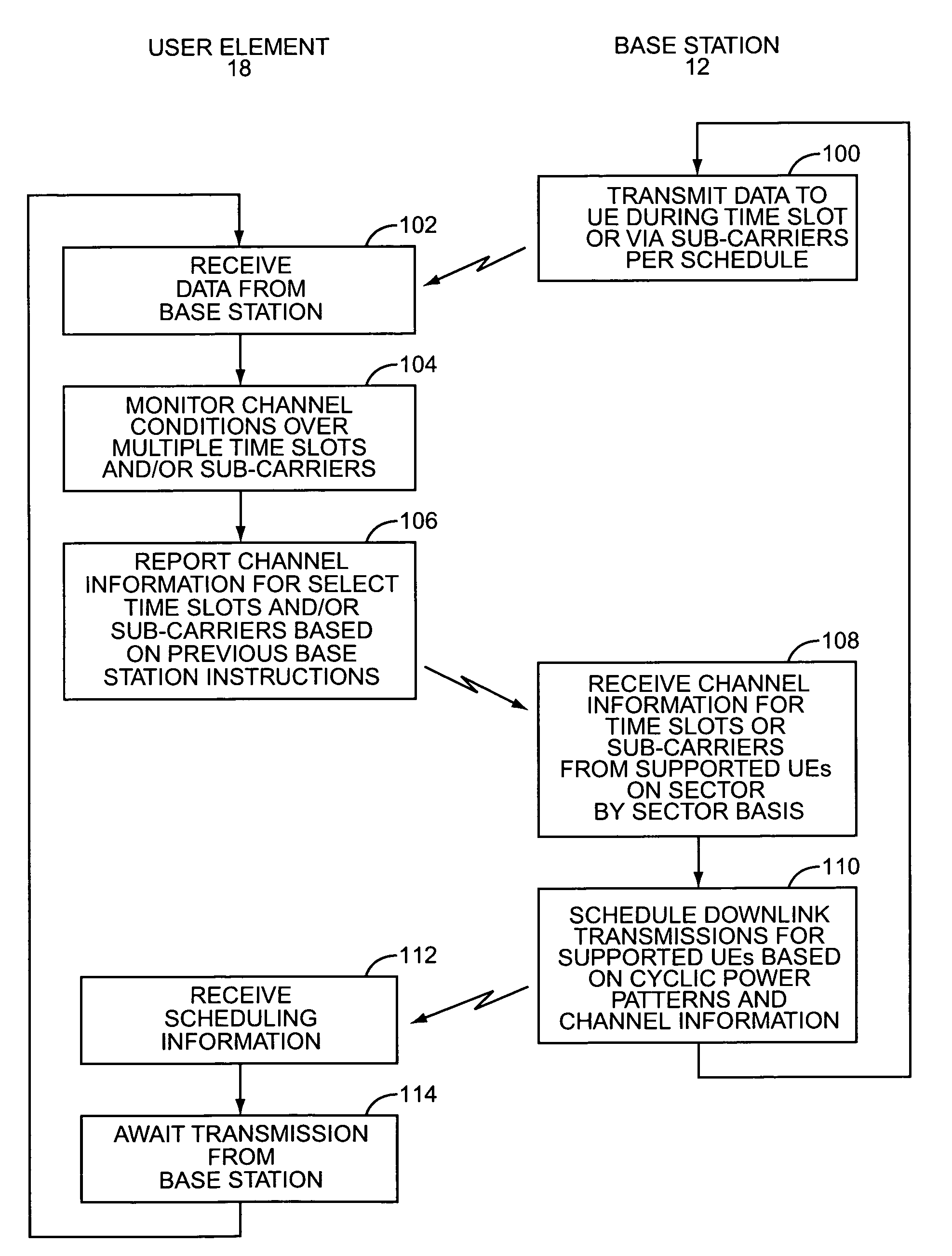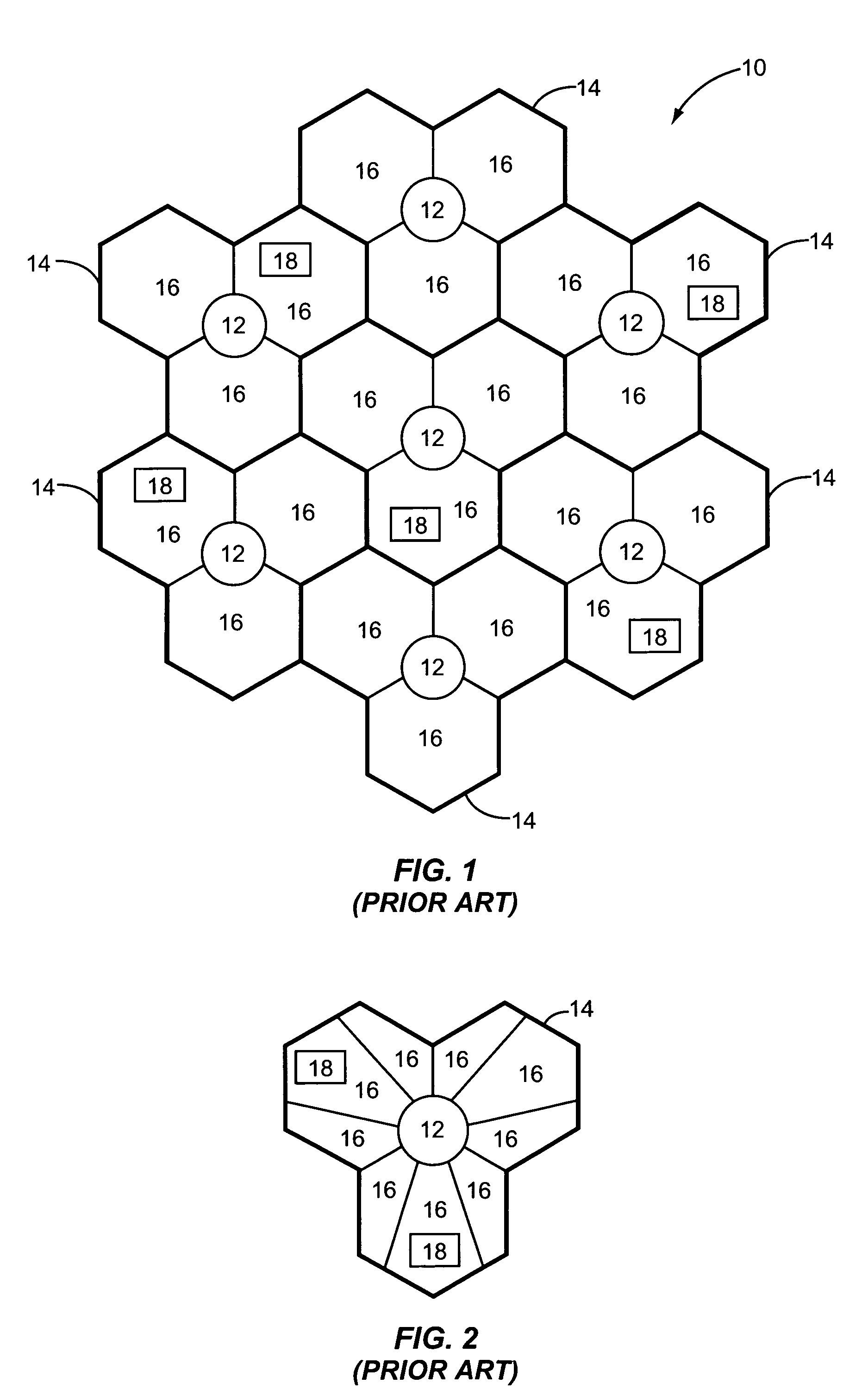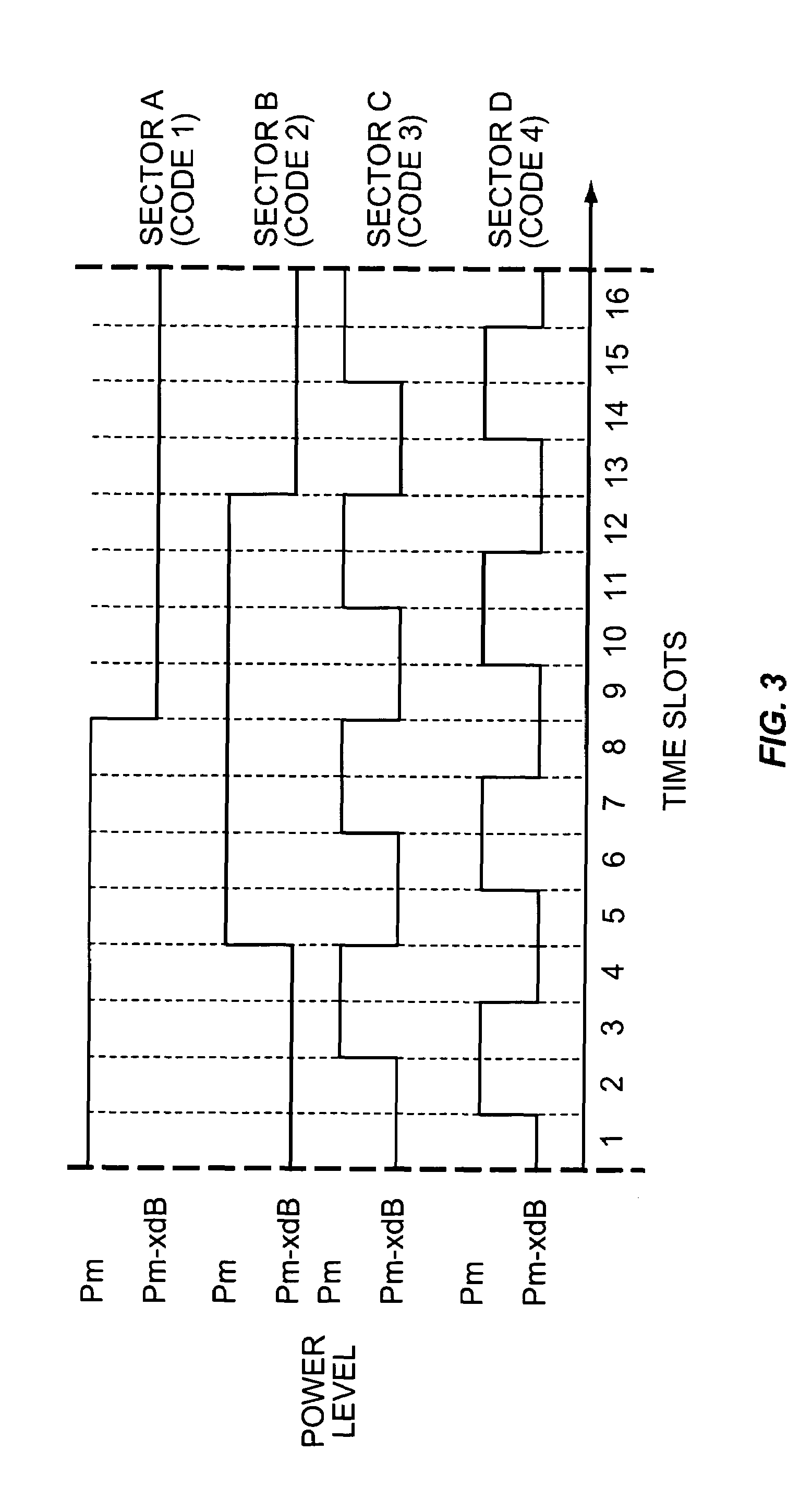Cyclic transmit power adjustment scheme
a transmission power and cyclic technology, applied in the field of radio frequency communications, can solve the problems of imposing significant penalties on system capacity and throughput, insufficient coverage at the edge of cells, and high implementation costs, so as to minimize the impact of interference, efficiently support dynamic needs, and minimize the effect of interferen
- Summary
- Abstract
- Description
- Claims
- Application Information
AI Technical Summary
Benefits of technology
Problems solved by technology
Method used
Image
Examples
Embodiment Construction
[0022]The embodiments set forth below represent the necessary information to enable those skilled in the art to practice the invention and illustrate the best mode of practicing the invention. Upon reading the following description in light of the accompanying drawing figures, those skilled in the art will understand the concepts of the invention and will recognize applications of these concepts not particularly addressed herein. It should be understood that these concepts and applications fall within the scope of the disclosure and the accompanying claims.
[0023]The present invention provides for distinct power change patterns for sectors 16 that are adjacent to one another in the same and separate cells 14. The cyclic power change patterns may be associated with transmission time slots, sub-carriers in an orthogonal frequency division multiplex (OFDM) spectrum, or a combination thereof. The cyclic power change patterns define pre-defined power levels at which communications will be...
PUM
 Login to View More
Login to View More Abstract
Description
Claims
Application Information
 Login to View More
Login to View More - R&D
- Intellectual Property
- Life Sciences
- Materials
- Tech Scout
- Unparalleled Data Quality
- Higher Quality Content
- 60% Fewer Hallucinations
Browse by: Latest US Patents, China's latest patents, Technical Efficacy Thesaurus, Application Domain, Technology Topic, Popular Technical Reports.
© 2025 PatSnap. All rights reserved.Legal|Privacy policy|Modern Slavery Act Transparency Statement|Sitemap|About US| Contact US: help@patsnap.com



